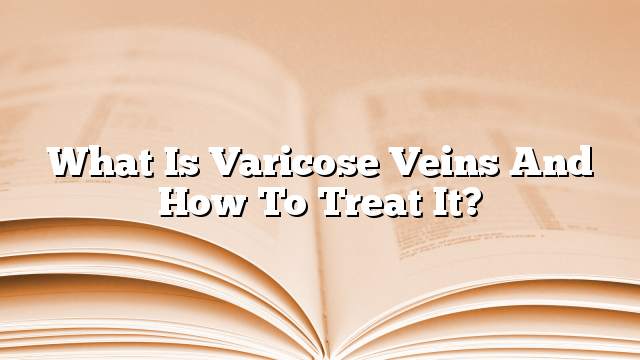The human body contains many complete and integrated devices that perform functions for the survival of human beings, and these organs circulatory system, which contains in turn a lot of blood vessels, namely arteries, capillaries and veins. It is the veins that carry blood from all parts of the body to the heart in the so-called large blood circulation. In order for the veins to move blood in a way that is opposite to gravity, they contain valves that prevent blood from reaching the bottom. Sometimes, however, these valves may encounter some problems or become damaged. Which leads to the accumulation of blood and thus the emergence of varicose problem.
What are varicose veins, and what are their causes?
The varicose veins are superficial veins that appear under the skin directly, in the form of blue veins and curvature or patches of red and blue capillaries under the skin, and the veins shown here are surface veins, and appear in the area of the legs and ankles, and the most common causes of varicose veins are :
- Increase pressure on the veins of the legs.
- Injury to the veins of the legs with damage.
- The valves are damaged in the veins of the legs.
- The presence of defects in the valves or weak walls of the veins due to a genetic defect.
- Obesity and overweight.
- Aging.
- Stand for long periods.
What are varicose veins?
As for the symptoms of varicose veins are:
- The presence of swelling, pain sensation, heartburn, and increased pain with stand.
- Itching in the vein.
- Skin changes such as dryness and inflammation.
- The presence of ulcers, and the occurrence of bleeding from the most basic injuries.
Ways to treat varicose veins
To treat the problem of varicose veins there are two ways:
Home Roads
Do not wear tight clothes or socks, reduce weight, avoid standing for long periods, raise your legs up every now and then, and not take any kind of hormones.
Medical methods
- Surgery: Under general or semi-anesthesia, several cuts are done in the leg.
- Internal intravenous laser: It can be performed under total or local anesthesia, assisted by the sonar, which is painless and does not take much time, as it can be terminated and the patient return to normal life after an hour only.
- Thermal frequency: This method does not require overnight stay in the hospital, as it is in the form of sessions during which radio frequencies to the venous wall to close it, and this method does not require any type of surgery and the leg may return to normal during the period ranging From one to two days.
- Steam: Here the veins are injected with steam of a very high temperature up to 300 degrees, to close the walls of the veins.
- Intrusion: It is a vein injection with a chemical that causes inflammation in the walls, which leads to closure. This may be done by injection with a specific fluid or foam, without the need for anesthesia.
- Surface laser: This method is used to remove the spider venous network of syphilis or blue, and the patient needs two sessions that take place in two periods separated by not less than the interval between the month.
